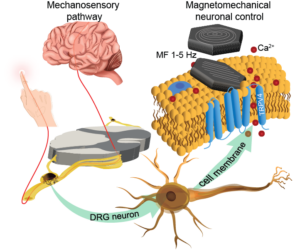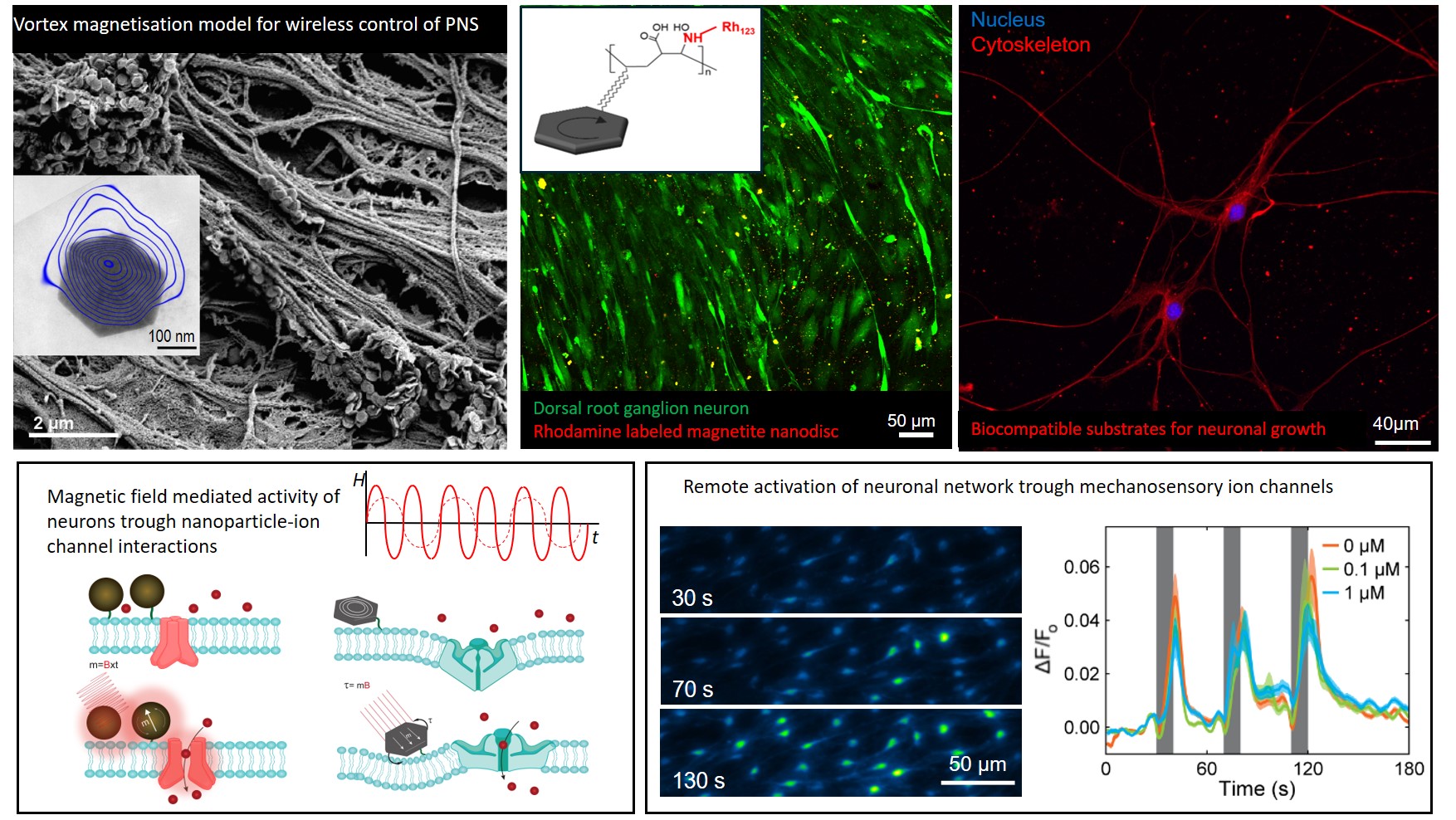Research
Research Focus Areas

We consider that radical innovations are more likely to be developed within diverse teams that operate by using connective thinking. We are forming a strong multidisciplinary lab from the fields of biophysics, materials science, chemistry, neuroscience, and neurosurgery that comes together at the core of biointerfaces.
Our expertise and interests span from engineering of tools and interfaces for cellular control and elucidating biophysical interfacial mechanisms, to the interrogation of cellular signalling in nervous systems.
We synthetise and functionalize inorganic materials to apply them in studies, aiming to replace or control biological functions.
Main research interests in the biointerfaces lab
At the intersection of Chemistry, Physics, and Biology, our research leverages advanced chemical techniques to test physical hypotheses and solve complex biological problems. Our interdisciplinary approach is centred around the development of functional nanomaterials and coatings that enable precise interaction with biological systems, offering groundbreaking applications in biomedicine.
Functional Nanomaterials
We focus on innovative synthetic approaches to develop functional nanomaterials and interfaces, such as magnetic, ferroelectric, and piezoelectric nanoparticles and composites. These materials are crucial for micro- and nanotechnologies that enable precise communication with biological systems.
Key features of our nanomaterials include:
- Magnetic State Configurations: Our materials exhibit specific magnetic state configurations, including single domain, multidomain, vortex, and onion magnetization.
- Core-Shell Structures: Composite structures with nanometer precision, where core-shell boundaries play a significant role.
- Nanoantennae: These responsive nanomaterials act as “nanoantennae,” converting magnetic field energy into thermal, mechanical, or electrical outputs. This functionality is achieved through the precise design of materials with targeted physical properties.
Functional Coatings
The design of functional coatings is critical for enhancing the performance of our nanomaterials. These coatings provide biocompatibility, colloidal stability, and the ability to target specific biological structures.
Our approaches include:
- Biocompatibility and Targeting: We use polymers, target proteins, peptides, and genetic engineering techniques (e.g., viral vectors) to tag and target cells and proteins effectively.
- Cellular Interface: By remotely interfacing with cellular systems at specific mechanistic structures, we can study and control cellular networks with unprecedented precision.
Applications in Biomedicine
Our materials are designed to interrogate cellular mechanisms, offering insights into physiology and potential nanomedical treatments, particularly in the nervous system.
Key applications include:
- Neuronal Targeting: We achieve high spatial resolution in targeting neurons, interfacing our nanomaterials with endogenous or genetically modified ion channels to control neuronal activity. This approach allows for unprecedented specificity in modulating neuronal circuits.
- Minimally Invasive Neuromodulation: The nanoscale size and magnetic field control of our materials enable minimally invasive, wireless technologies for neuromodulation, providing a less invasive alternative to traditional neural implants.
- Multimodal MRI Contrast Agents: Our materials function as highly effective MRI contrast agents due to their high magnetic susceptibility and vortex structures in anisotropic nanoferromagnets. This sensitivity holds promise for early disease detection and targeted imaging.
- Multimodal Nanotherapeutics: The responsiveness of our materials facilitates the design of multimodal nanotherapeutics, drug delivery systems, hydrogel-based implants, and nanoscale sensors that can decode inherent biological signals.


